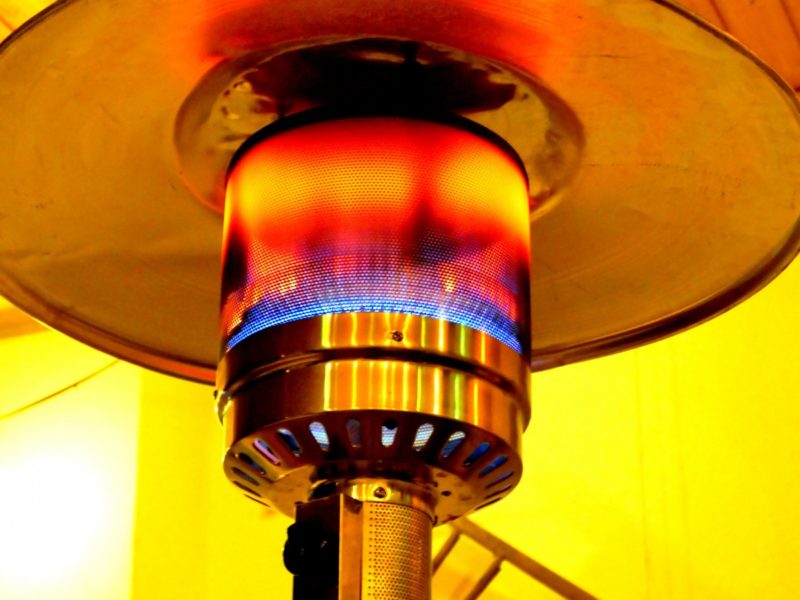Have you ever wondered what is an oil-filled heater? No more wonder you have arrived at the right place. Oil-filled heaters resemble traditional radiators in appearance, although they are much shorter. These are composed of a series of fins and columns connected.
They may have open areas between the columns or fins attached to a foundation and have a control center in the front. Flat panels are found on sure oil heaters, but they are uncommon.
Oil-filled heaters, unlike typical radiators, are portable. The link to the home power system through a conventional wall socket, allowing them to be relocated to any area that needs additional warmth. Some even include carrying grips, while larger ones usually have wheels to facilitate easy repositioning. This is just a preview. Keep reading to learn more.
What An Oil-Filled Heater Is?
Diathermic oil is found within the fins or bodies of oil heaters. Because this oil is not utilized as a fuel source, it won’t have to be renewed. Instead, the oil serves as a heat reserve, which means it’ll never be depleted. Instead, it stays in the heater and circulates. The heater’s resistor will receive the electricity. The power will be transformed into heat in this way.
This oil within the heater absorbs heat. The heated oil will travel through the column & fins. This oil’s flow into the heater’s steel fins transmits the heat. As a result, surface temperatures are more consistent. Whenever the steel of the fin heats up, it radiates heat throughout the space. Because of convective heat transfer, the heat will start to flow around the room.
The reason for this growth is that oil heaters run quietly. The majority of versions lack a built-in fan. On the other hand, organic air convection is in charge of distributing the generated heat throughout the space. Whenever a gaseous or fluid is heated to a high temp, it will begin to climb. Warm air will ascend to the roof, pushing colder air down the floor. An oil heater would heat the chilly air, resulting in a constant current that flows throughout the space. This current produces uniform temperatures across the room over time.
What Is Diathermic Oil And How Does It Work?
Diathermic oil possesses two characteristics that make it the best heat storage. It has high melting and boiling points and a large heat capacity. It implies that the heater’s diathermic oil may hold a lot of heat while not burning it. Whenever a fluid boils, it turns into vapor, requiring a high-pressure apparatus to have the extra volume. The additional technical burden is unnecessary because diathermic oil somehow doesn’t achieve a boiling temperature. Even after the power is turned off, the oil would continue to radiate heat because it has an enormous heat potential.
Advantages Of An Oil-Filled Heater
The fan blows hot air out into the space from a typical space heater with an uncovered heat source. Oil heaters seem to be almost completely quiet. The thermostat regulates automatically, so the slightest sound it produces is clicking. Electric heaters were nearly entirely efficient, meaning that virtually all energy consumed is immediately transformed into heat.
The fan motor would not need to be powered by an oil-filled heater. After the electricity has been switched off, they continue to radiate heat. Oil-filled heaters will autonomously turn on and off to keep a reasonable temperature as once space or bedroom achieves that degree, rather than operating continually, conserving your cash and avoiding overheating areas. The use of oil-filled heaters is reasonably expected. Oil radiators were, in reality, the best pick for space heaters due to their security, energy economy, and efficacy. Oil-filled heaters were highly portable and easy to transport from one location to another. Some of them are compact beneath a desk.
Oil-Filled Heater Maintenance
Oil-filled heaters don’t need much by way of upkeep or maintenance. Electrical issues, such as defective cabling or a malfunctioning power supply, are most prevalent and may be rectified by an authorized service professional. When the heater is not working, so it’s not the fault of the wiring, get it looked out by an expert.
An oil-filled heater might produce a leakage at any time. When you observe a liquid pouring from the device, turn it off and stop using it immediately. Leaks could be rectified or supplied since the oil is locked within the heater at the manufacturing. People have reported hearing sounds originating from these normally quiet heaters. It’s usual to hear cracking and popping noises when the oil or metal warm-up When the heater has been flipped upside downwards, you may notice a bubbling sound whenever the oil settles into the pipes because once you turn it straight. Using the heater, wait until the noise ceases. On the other hand, you might find this article helpful: installation of water heaters.
It’s A Wrap!
We are happy to know that you have learned what is an oil-filled heater. These are highly-efficient heaters used in homes to warm the rooms. You can maintain these heaters with less effort and can save electricity bills. For more options, here are other articles to read: how to make a solar water heater and why does my tankless water heater go cold. Thank you, friends, for sticking with us.

